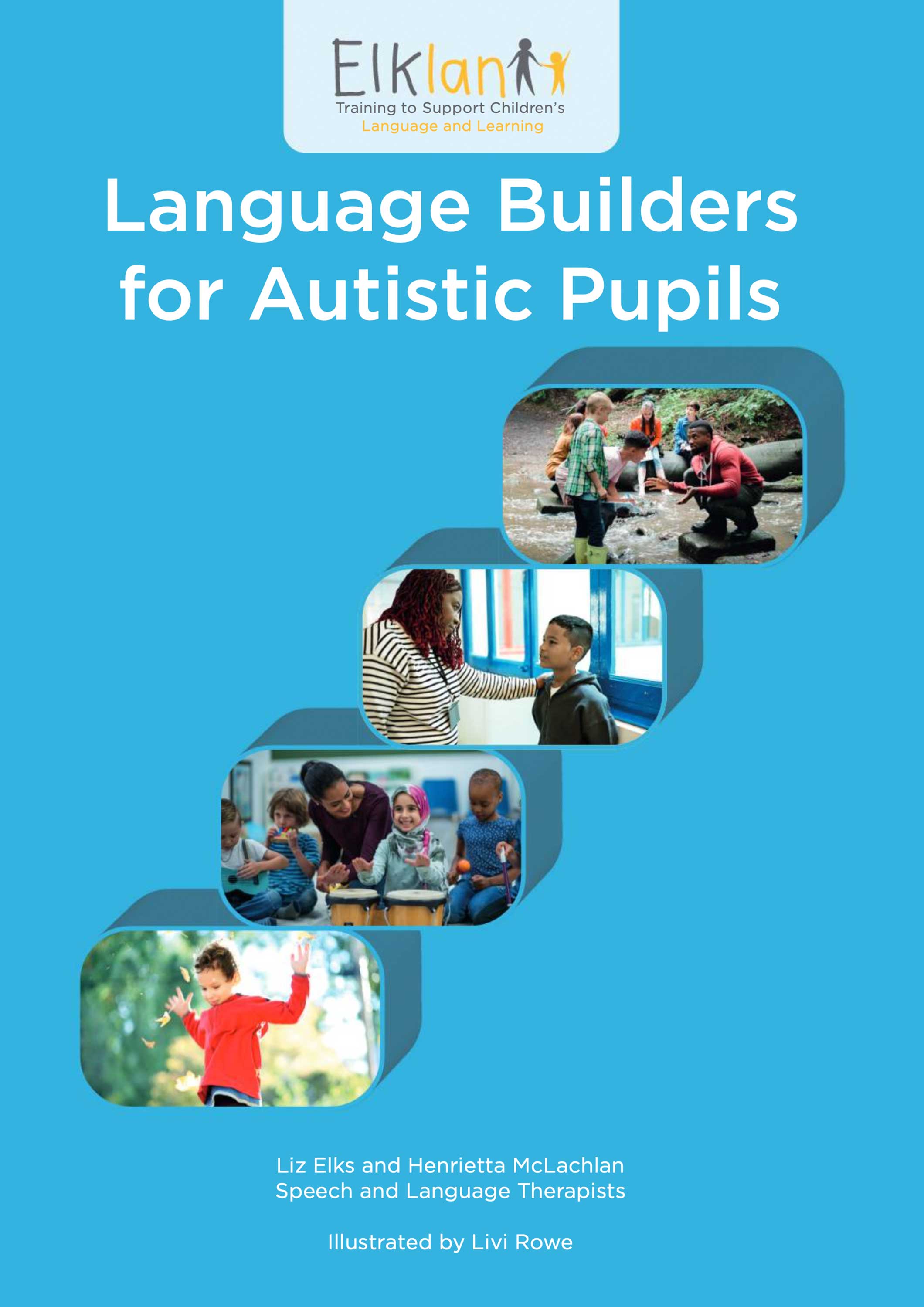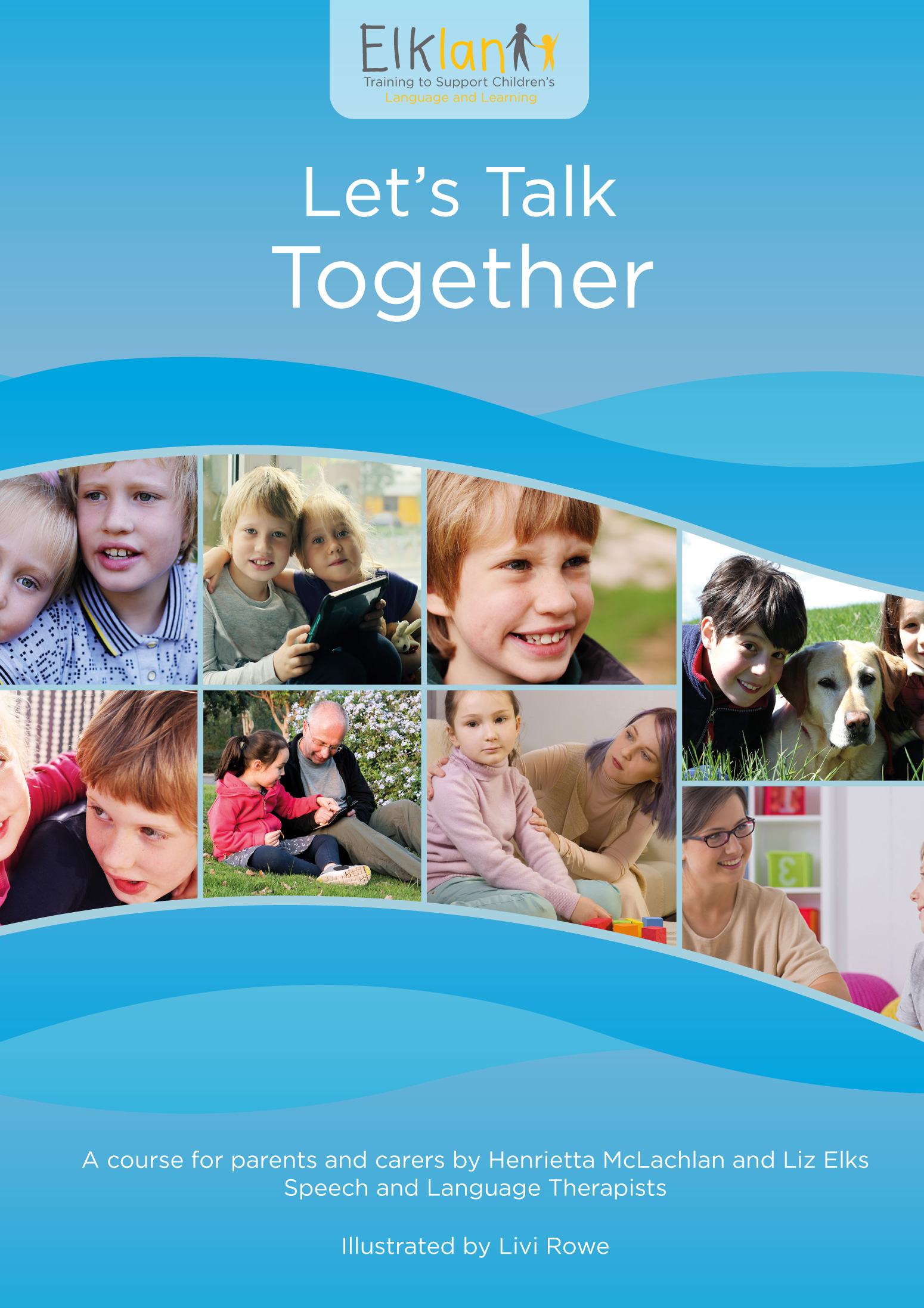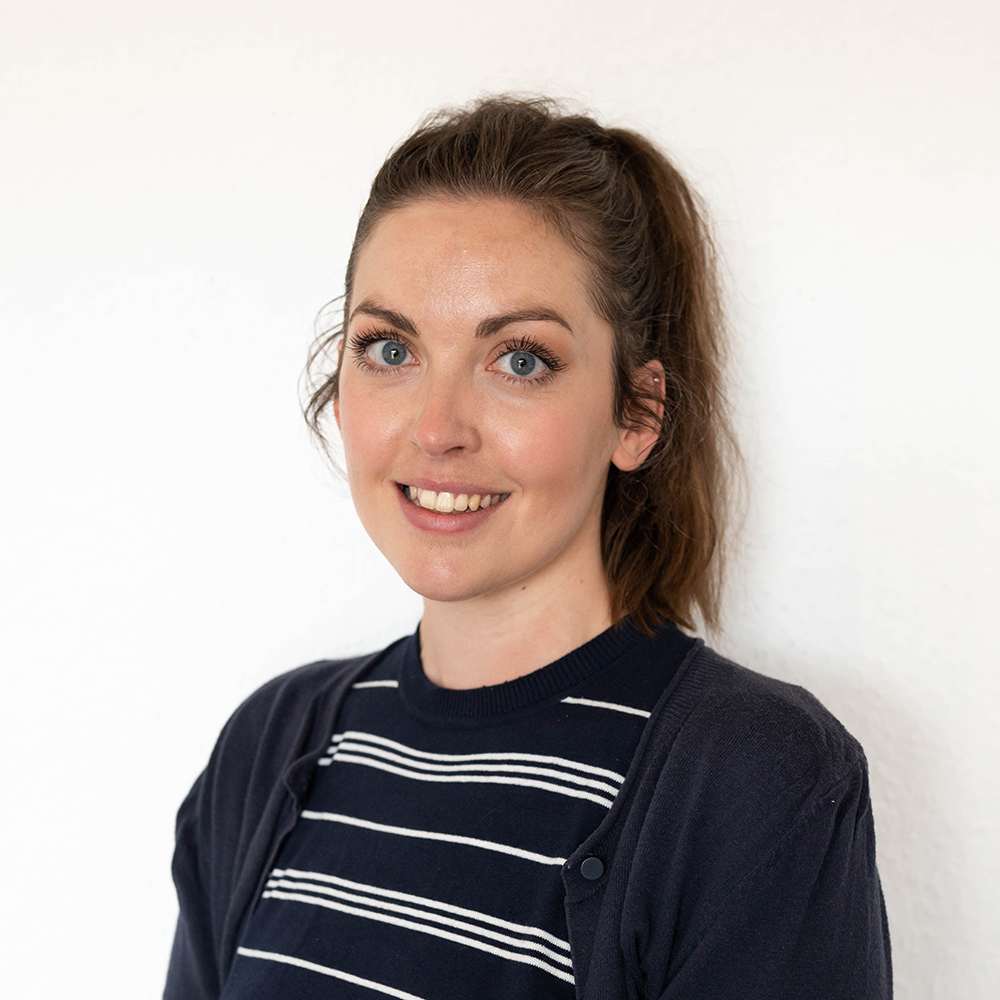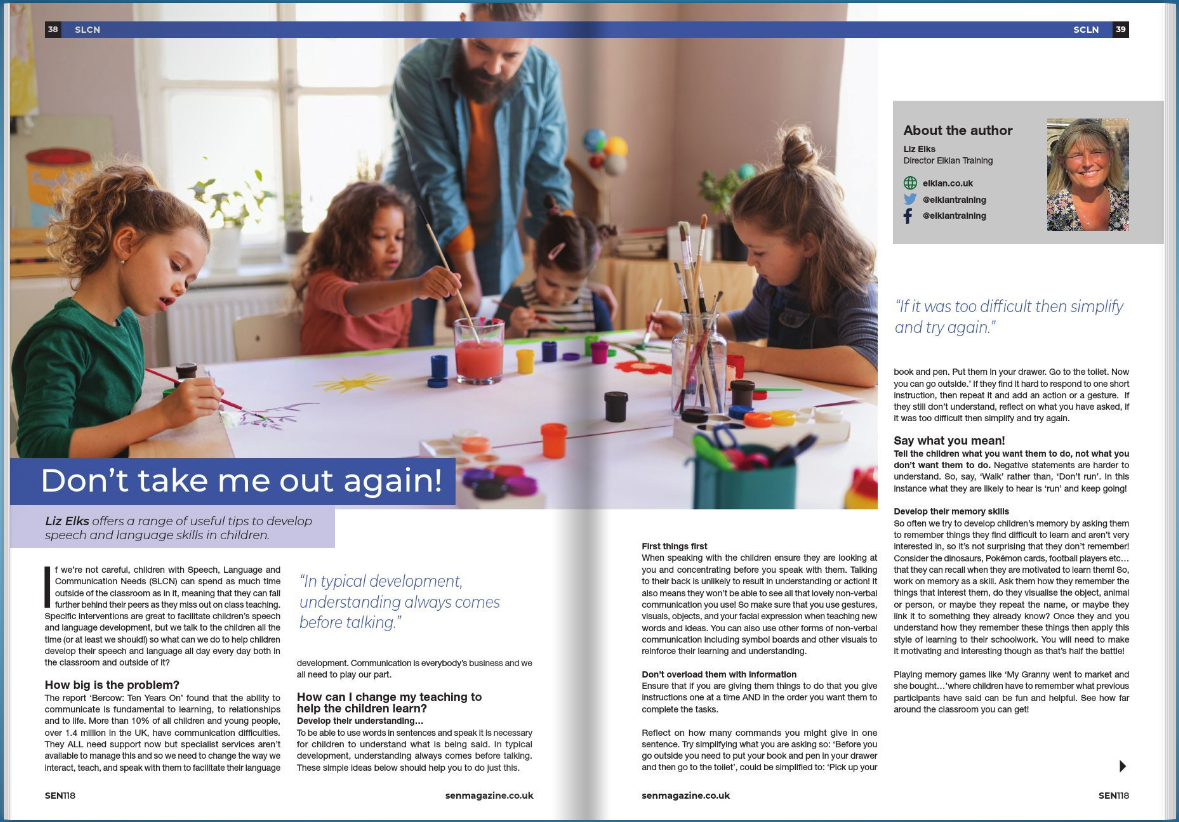Autistic people all have some form of communication challenge as part of their autistic picture. Some will be non-verbal and rely on visual supports, sign systems and communication aids to communicate.
Others will be very chatty and highly verbal but, because of their social interaction challenges, struggle to use their language appropriately within a social context.

Whatever their degree of difficulty, some simple tips can help us all communicate together more effectively.
1. Be aware that autistic children and adults struggle as much with non-verbal communication (NVC) as they do verbal.
NVC is any form of communication which doesn’t use words e.g. eye gaze, gestures, facial expression, tone of voice, proximity etc., etc....
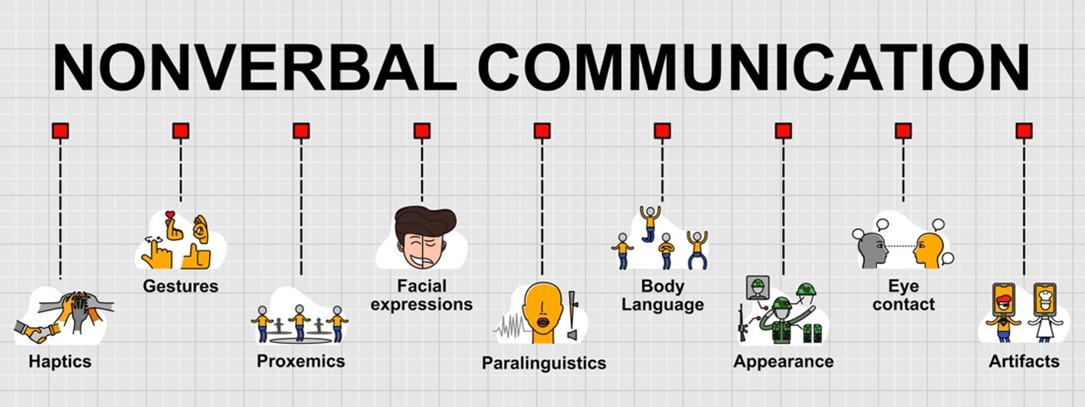
This means that these extra clues that neuro-typicals use to understand what is being said when they don’t understand the words are not always available to those with autism.
Do continue to use both verbal and non-verbal communication, as this is VERY important, but try to also use NVC which stays, such as symbols, pictures, photographs, and real objects. These are generally more helpful as they reduce the memory load.
2. Use suitable visual supports, make sure that the individual can understand the visuals you are using.
Visuals are there to support and develop independence, so they will only be useful if the child or young person can understand them. The following types of visuals can be used: real objects, photographs, coloured pictures, black and white pictures, coloured symbols, black and white symbols, and written words. Use the ones which best suit the person you are working or living with.

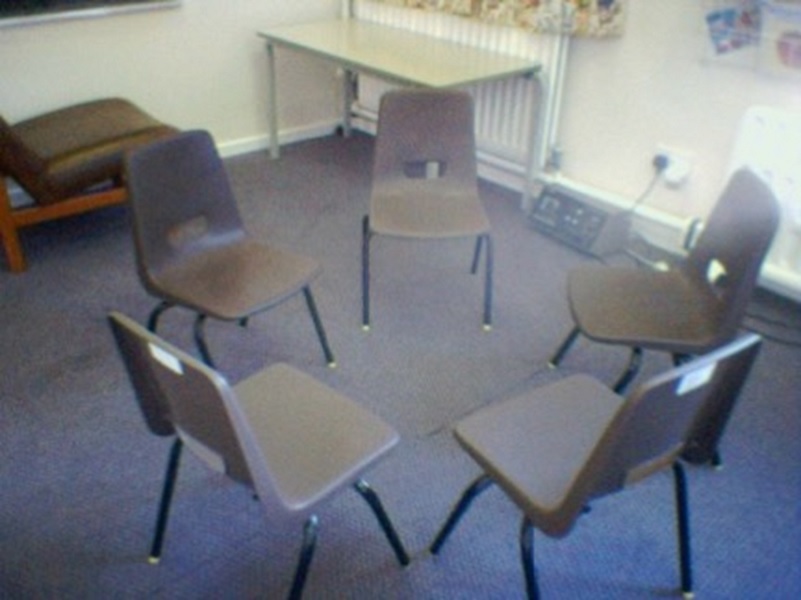
3. Use physical structure.
It is so easy to overlook the power of physical structure. Consider how much information you receive about a given context from the way the room is laid out. For example, if you are invited around for supper at a friend's house, you will know immediately if it's a light buffet or a meal by the way the table and chairs are arranged. Consider how you can help children and young people to know what is going to happen in a lesson by arranging the furniture to give them clues, e.g. chairs in a circle for group work, rows for tests and carpet time for storytime.
4. Remove distractions.
This is part of physical structure too. Seat children away from open doors or windows. Keep the classroom clutter-free. Only have information on the wall which is meaningful and useful. We can all be distracted by unnecessary pictures and information, so if you don't use it or need it, remove it!

5. Be aware of sensory challenges.
Many of us will find itchy labels, loud noises, and strong smells distracting and hard to manage. Those with autism can have a heightened awareness of sensory stimuli. Avoid wearing strong perfume or aftershave. Be aware of the amount of jostling which may happen when moving around the school or classroom and consider ways to minimise this. Prepare the children for any loud noises which you know are going to occur.
6. Say what you mean, mean what you say! Avoid using idioms and sarcasm.
Very often, we don't say what we actually mean! We will use phrases such as: 'I must fly', or 'See eye to eye', and we need to have excellent language skills to interpret these and understand their real meaning. This is hard! So, try to avoid using phrases unless you know the individuals understand them. You can specifically teach them too; this will help.

7. Engage everyone in ‘heavy work’.
When we feel anxious or stressed, it's good to engage in physical activity. This is true for all the children and young people in the classroom too. Those with autism will particularly benefit from physical activity, so ask for help to move equipment in PE or to shift chairs when changing the physical structure in a room. Ask for help when carrying books between classrooms. This will help students to manage their sensory challenges.

8. Draw the conversation.
Because of the nature of autism, chatting things through doesn't always help to resolve issues. If you draw the conversation, though, whilst discussing specific interaction challenges, that can be useful. Create little doodles or chat cartoons with stick people, speech and thought bubbles. Carol Grey's Comic Strip Conversations will also be a great help here.
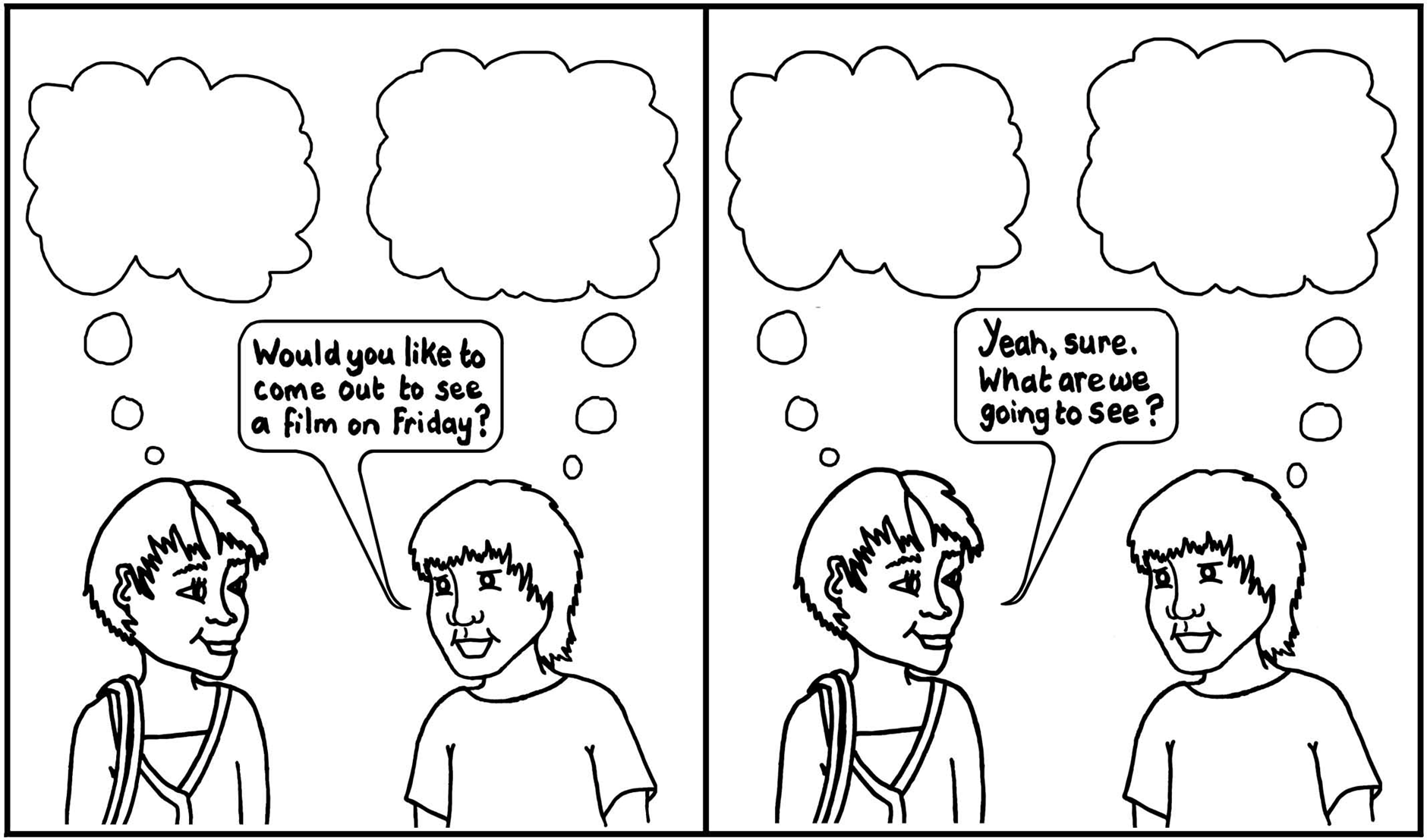
9. Interpret behaviour as communicative.
There are times when we all will communicate through our behaviour. Consider the last time you were frustrated or angry. I am sure this impacted the way you related to and behaved with others. This will also be true of those with autism. Become a behaviour detective and look for any triggers which may have preceded the behaviour. Try to put strategies in place so that these triggers are minimised. Using visuals, reducing distractions, and thinking about how children in school are transitioned from one activity to another will all help.
10. Be aware that your response to the pupil’s behaviour may be reinforcing it!
So often, the way we respond to others' behaviour exacerbates it. Consider the child who cries when she doesn't get what she wants. If she is given what she is requesting every time this happens, the crying behaviour will continue. This is exactly what she wants, and so she will keep up the crying to have her needs met! So, when being a behaviour detective, also consider your role in the interaction, change your response and see if the behaviour lessens.
Liz Elks, author of this blog post, is a Director and Founder of Elklan training. Part of her role is to write and deliver the accredited course Communication Support for Verbal Pupils with ASD, available now as blended e-learning. You can find out more and apply now here.
Alternatively, purchase Language Builders for Autistic Pupils to receive many more ideas and tips to use when working with autistic children and young people.
Parents can also buy this or the workbook associated with the Let’s Talk Together course, which also provides a wealth of ideas and strategies to use at home.
If you would like more information about Elklan’s offer, please explore the above links, or call 01208 8411450


